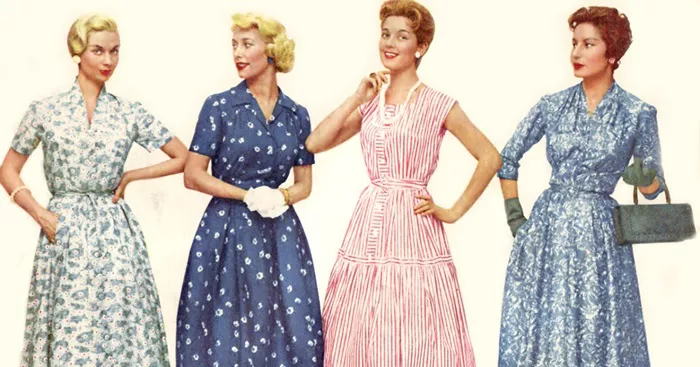Vintage clothing holds a special place in fashion, offering unique styles and historical value that transcend trends. This comprehensive guide delves into what constitutes vintage clothing, its defining characteristics, how to identify it, and tips for collecting and preserving these timeless pieces.
Introduction to Vintage Clothing
Vintage clothing refers to garments that are at least 20 years old and are typically associated with a specific era or time period in fashion history. Unlike antique clothing, which is generally over 100 years old, vintage pieces represent styles from the mid-20th century onwards. The allure of vintage fashion lies in its nostalgia, craftsmanship, and the stories each piece carries from bygone eras.
Defining Vintage: Age and Time Periods
Understanding the age criteria and time periods associated with vintage clothing is essential for collectors and enthusiasts:
Age Criteria
Vintage clothing is typically considered to be:
20 to 100 Years Old: Garments within this age range are often classified as vintage, reflecting styles from the early to late 20th century.
Time Periods
Vintage fashion spans various decades, each characterized by distinct styles and influences:
1920s to 1990s: Key decades include the flapper dresses of the 1920s, the glamorous Hollywood styles of the 1930s and 1940s, the iconic looks of the 1950s and 1960s, the bohemian vibes of the 1970s, and the bold, eclectic fashion of the 1980s and early 1990s.
Characteristics of Vintage Clothing
Quality and Craftsmanship
Vintage clothing often exhibits superior craftsmanship and attention to detail:
Fabric Quality: Natural fibers such as silk, wool, cotton, and linen were commonly used, offering durability and comfort.
Construction Techniques: Hand-sewn finishes, intricate embroidery, and tailored cuts reflect the skilled craftsmanship of earlier eras.
Design and Style
Vintage garments are known for their distinct design elements and aesthetic appeal:
Silhouettes: Styles may include flared skirts, fitted bodices, wide-leg trousers, and structured jackets that define the fashion of their respective periods.
Details: Unique features like ruffles, pleats, lace accents, and decorative buttons are common in vintage clothing, adding to their charm.
Historical Significance
Each vintage piece tells a story about the cultural and social context of its time:
Fashion Trends: Reflects prevailing trends, societal norms, and influences from art, music, and politics.
Iconic Designers: Some vintage pieces bear the signatures of renowned designers whose work defined fashion movements and eras.
How to Identify Vintage Clothing
Distinguishing genuine vintage pieces from contemporary or retro styles requires careful examination:
Labels and Tags
Manufacturer Labels: Look for tags with outdated brand names, logos, or sizing conventions that are no longer in use.
Fabric Labels: Vintage garments often have fabric care labels that differ from modern symbols and instructions.
Construction and Materials
Seams and Stitching: Vintage clothing may feature hand-sewn or finished seams, contrasting with the more uniform machine stitching of modern garments.
Zippers and Fastenings: Antique zippers, buttons made from natural materials like wood or shell, and metal closures with unique designs are indicators of vintage clothing.
See also:Finding Miss Me Jeans: What Is The Biggest Size Available?
Style and Design Elements
Silhouettes: Familiarize yourself with the silhouettes and cuts popular during different decades, such as the cinched waists of the 1950s or the loose, flowing styles of the 1970s.
Prints and Patterns: Vintage clothing often showcases specific prints and patterns that were fashionable during its era, such as floral prints of the 1960s or geometric motifs of the 1980s.
Tips for Collecting Vintage Clothing
Building a vintage clothing collection requires patience, research, and a discerning eye:
Research and Learn
Fashion History: Study the evolution of fashion trends and key designers to identify sought-after vintage pieces.
Authentication: Familiarize yourself with authentication methods and resources to verify the authenticity of vintage garments.
Explore Sources
Vintage Shops: Visit reputable vintage boutiques, thrift stores, and flea markets known for curating authentic pieces.
Online Platforms: Explore online marketplaces, auction sites, and vintage clothing forums to expand your search globally.
Condition and Care
Inspect Carefully: Assess the condition of vintage clothing for signs of wear, damage, or alterations that may affect its value.
Proper Storage: Store vintage garments in a cool, dry place away from sunlight to preserve fabrics and prevent deterioration.
Preserving the Legacy of Vintage Clothing
Conservation Practices
Professional Cleaning: Consult with experts in textile conservation for cleaning and preservation advice tailored to vintage fabrics and materials.
Document and Display: Keep records of provenance and history associated with significant pieces in your collection. Display or store them using archival methods to maintain their integrity.
Conclusion
Vintage clothing offers more than just style; it embodies the creativity, craftsmanship, and cultural significance of past eras. Whether you’re a collector, fashion enthusiast, or simply intrigued by the allure of vintage fashion, understanding what defines vintage clothing and how to identify and collect it enriches your appreciation for its timeless appeal.
Related topics:
- Women’s Plus Size Nike: Comfort, Style, Performance
- Discovering Carter’s Dresses: A Shopping Guide
- Zara Plus Size Women’s Clothing: Style, Fit, And Selection

